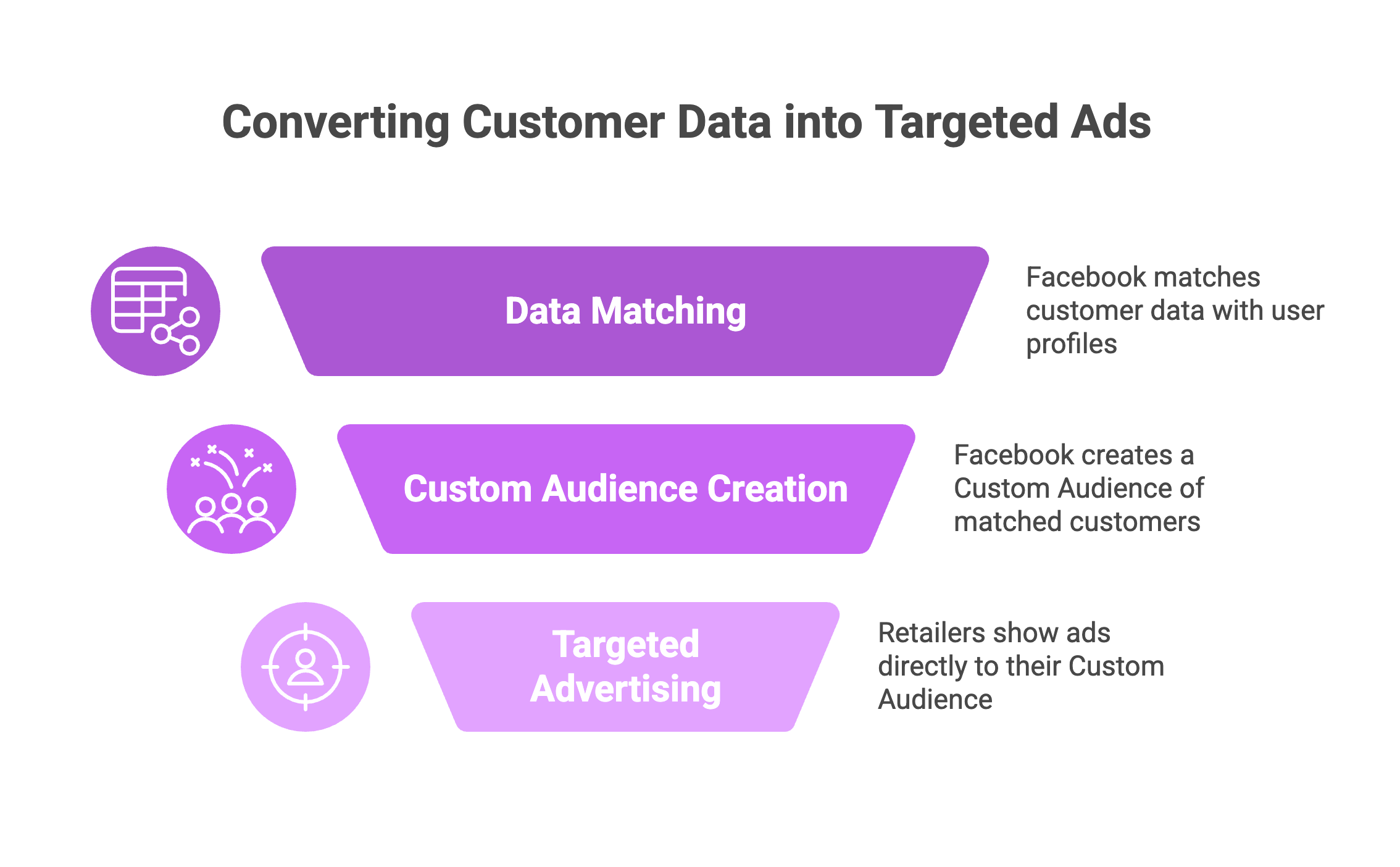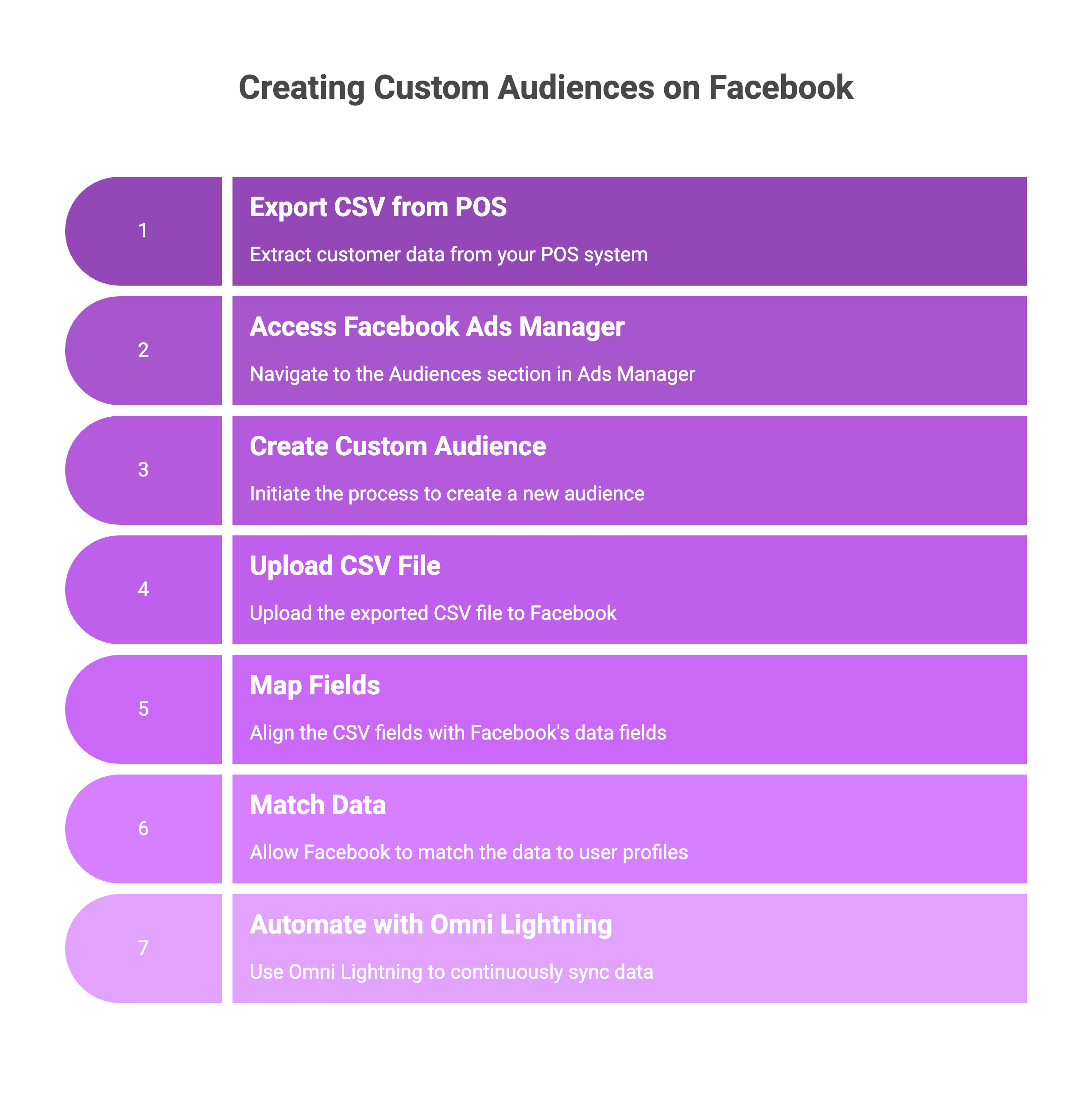How Retailers Can Use POS Data to Increase Sales with Meta Ads
If you’ve ever run Facebook or Instagram ads and felt unsure if they were actually driving in-store sales, you’re not alone.
In fact, after nine years of running ads myself, the number one factor that determines success isn’t the ad creative or the budget — it’s who you’re targeting.
Here’s the thing: whether you have 3,000 customers or 3 million in your POS system, over half of them have likely shopped with you once and never come back.
That’s where your POS data becomes your most powerful marketing tool.
In this article, we’ll break down how to use your POS data to re-engage past customers, attract new ones, and actually track in-store sales from your Meta ads.
Let’s get into it.
Why Your POS Data Is the Key to Smarter Meta Ads
Every retailer has a goldmine sitting in their POS system — customer names, phone numbers, and emails.
What most don’t realize is that this information can be securely matched with Facebook and Instagram profiles.
When you upload this data (or use software like Omni Lightning to automate it), Meta can find and target the exact people who’ve already shopped with you.
Here’s how it works in plain English:
You export your customer data — first name, last name, phone, and email.
Facebook matches that information to user profiles.
It creates a Custom Audience of your actual customers.
You can then show ads directly to them — reminding them about new products, sales, or events.
This isn’t theory — it’s real-world marketing that brings customers back through your doors.
The Three Most Important Data Points to Capture
When it comes to getting the highest “match rate” (the number of POS customers Facebook can identify), the three most critical data points are:
First and last name
Phone number
Email address
The more complete your customer records are, the higher your match rate will be — often between 70% and 90%.
So if you’re not already collecting phone numbers at checkout, start today. That single step can make your Facebook and Instagram ads significantly more effective.
Real Example: Matching POS Data to Facebook Profiles
One retailer we recently worked with had 275,000 customers in their POS system.
When we ran that list through Omni Lightning, our software matched 220,000 of them with Facebook and Instagram profiles.
That means the store can now show ads to over 220,000 real past customers who’ve already spent money with them — all for a few cents per impression.
To put that in perspective:
For every 1,000 customers you target, you’ll spend about $10 on ads.
If your average order value is $200, that’s potentially $200,000 in sales for just ten bucks of ad spend.
That’s the power of using your POS data correctly.
How to Upload Your POS Data Manually (or Automate It)
If you want to do this yourself, it’s simple — though a bit technical.
Export a CSV from your POS system (include name, phone, email).
Go to Facebook Ads Manager → Audiences.
Choose “Create Custom Audience” → “Customer File.”
Upload your CSV and map the fields.
Let Facebook match the data to user profiles.
If you prefer to automate the process, Omni Lightning does this for you — continuously syncing your data to Facebook and Instagram so your audiences stay up-to-date without manual uploads.
The Real Advantage: Tracking In-Store Sales from Ads
Here’s where most ad strategies fall short — they don’t track what happens after the click.
You spend money on ads, but have no idea if those ads actually led to in-store purchases.
That’s where Omni Lightning changes the game.
Once your POS data is synced, Omni Lightning tracks which customers saw or clicked your Meta ads — and whether they came back to shop in your store within 28 days.
So you’ll know:
How many past customers saw your ads and returned
How much revenue came from those ads
Exactly how your Facebook and Instagram spend impacts real-world sales
In other words: you’ll finally know which ads are working and which dollars are wasted.
Why This Works So Well
Here’s the simple reason this strategy is so effective:
You’re not trying to convince strangers to buy — you’re reminding your real customers to come back.
And unlike email or direct mail, Facebook and Instagram ads are cheap and visible.
For just a few dollars a day, you can consistently appear in front of your best customers — at the exact moment they’re scrolling and ready to engage.
Over time, this becomes a complete cycle:
You collect customer data.
You target those customers on Meta.
They shop again.
You track the results.
You repeat.
And because the system knows who recently purchased, you’re not wasting money showing ads to someone who just checked out.
The Bottom Line
If you’ve ever run Facebook or Instagram ads and wondered, “Are these even working?” — your POS data holds the answer.
When you match it with Meta, you can:
Re-engage past customers
Lower your ad costs
Track in-store sales with confidence
You don’t need a bigger budget. You just need better targeting.
If you want to see exactly how this works for your store, schedule a free demo with Omni Lightning today — and we’ll show you how to connect your data, launch your campaigns, and finally track your in-store ROI.





